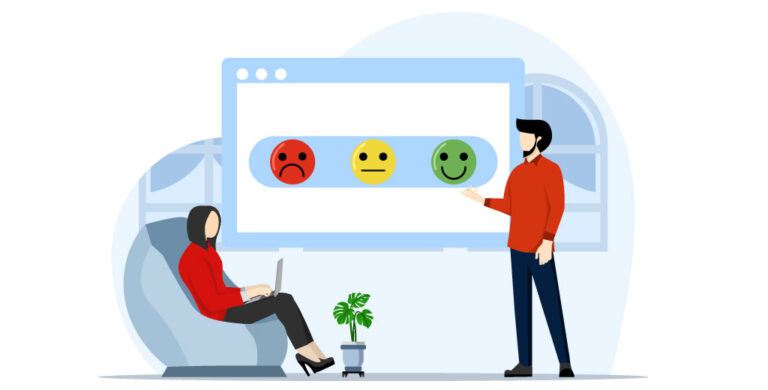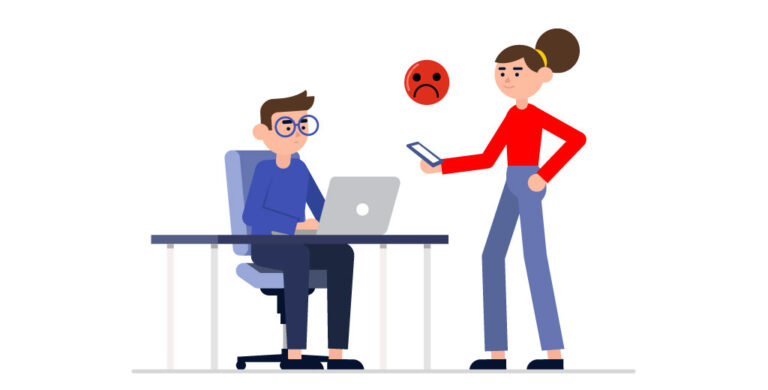
How to Minimize the Impact of Negative Customer Feedback with Markitar Software
Recieving negative feedback can be unpleasent but it also presents and opportunity to learn and improve you product or service. Whether it is a complsint or a bad review, your responce can decide if that unhappy customer leaves dissatisfied or becomes devoted to your brand. With Markitar’s software, you can effectively manage negative reviews and turn challanges into positive results.

What is Negative Feedback?
Negative feedback from your customers includes complaints or criticisms about the product, service or experience provided to them by your brand. Even if they are unpleasent to recieve initially, they can offer valuable insights that can help with improvement. Examples might include product related problems, delayed survices or even poor support. The key is to deal with it all in a constructive manner.
Responding to Negative Customer Feedaback
Responding effectively to nagative feedback showcases your concern towards your customers. Here is how you can minimise its impact:
1. Accept the Mistake
Take responsibility for the error instead of becoming defensive. A simple acknowledgment like, “We apologize for the inconvenience and value your feedback,” can make a significant difference. Markitar’s Software helps personalize and automate responses to facilitate this step.
2. Acknowledge the Issue
Demonstrate your empathy and professionalism by showing the customer that their concerns matter. A statement like, “We understand the frustration you’ve experienced,” conveys understanding and a commitment to addressing the issue.
3. Act on It
Actions speak louder than words. Customers want to see the concrete steps you’re taking to address the problem and prevent it from happening again. “We’ve listened to your feedback and are actively working on a solution to enhance this experience for you.”
4. Apologize
A genuine, sincere apology can go a long way in helping to rebuild lost trust. Avoid giving generic, one-size-fits-all responses; instead, craft an apology that is tailored and specific to the issue at hand. This personalized approach demonstrates your understanding of the problem and a genuine commitment to resolving it.
5. Avoid Making Excuses
Taking responsibility, focusing on solutions, and demonstrating a willingness to improve are key when dealing with negative situations. Excuses often only exacerbate the problem. Instead, a constructive approach that addresses the issue directly can transform a negative experience into a positive one.
6. Offer a Solution
Resolving customer issues through actions like refunds, replacements, or discounts can turn a negative experience into a positive one. “To make amends, we would like to offer you 15% off your next purchase.” Markitar’s Software simplifies the process of tracking and addressing customer concerns.
7. Encourage a Private Discussion
For sensitive matters, it’s best to address them privately. Invite the customer to connect with you one-on-one to discuss the issue in more detail and work together to resolve it.
8. Close on a Positive Note
End your response with optimism and gratitude; appreciating the feedback. Reassure the cutomer that their experience and satisfaction is important. Show them that you are aommited to improving the experience and will use this opportunity to better understand and address consumer’s concerns.
Utilising Negative Feedback to Improve Customer Experince with Markitar
Negative feedback is an opportunity to improve your business and build customer trust. Markitar’s software makes it easy to turn complaints into insights. Use bad feedback to enhance your customer experience.
1. Identify Recurring Issues
Negative feedback highlights gaps that businesses might miss. Markitar’s tools make it easy to find recurring problems whether it’s slow service, product quality issues, or poor communication. For example, if many customers complain about slow deliveries, it shows you need to improve your logistics.
2. Improved Services Based on Feedback
While addressing negative reviews is important, the real solution is to improve your internal operations. You can use customer service feedback to drive growth. A thoughtful response to unfavorable reviews can turn dissatisfied customers into loyal brand supporters.
3. Develop New Features and Services
Analyzing customer feedback can highlight valuable opportunities to improve your offerings. Markitar’s tools classify and track these inputs, ensuring no insightful feedback is missed. For instance, if customers often request more support options, you can create a 24/7 chatbot or comprehensive FAQ section to address their needs.
4. Analyze and Monitor Feedbacks
Closely monitoring reviews is key to boosting customer satisfaction. Markitar’s software gathers and organizes reviews, then thoroughly analyzes customer sentiments. This lets you track progress and stop issues from recurring. Closely watching unfavorable feedback ensures your team acts fast, preventing lasting harm to your brand.

How to Apologize for Bad Service
Offering a thoughtful apology is essential when responding to negative reviews. Here’s a step-by-step approach to converting dissatisfied customers into brand champions:
- Acknowledge the Issue: Start by recognizing the customer’s frustration and validating their experience. For instance, “We deeply apologize for your recent unsatisfactory encounter with our service.”
- Take Accountability: Even if the problem was not entirely your fault, accept responsibility for the situation. This builds trust and showcases your dedication to your customers.
- Offer a Resolution: Provide a clear solution to address the problem, such as refunds, replacements, or expedited service.
- Follow Up: Ensure the customer is satisfied after the resolution. This small gesture can make a meaningful difference.
Avoiding Negative Customer Reviews
To prevent any negative feedback from those utilising your product or sevices, it is important to:
1. Understanding Customer Needs
Truly nderstanding your customers’ needs is key to preventing negative reviews. Dedicate time to listen to their concerns, preferences, and expectations. Gather insights through surveys, feedback forms, and direct communication. This proactive approach helps address issues before they turn into unfavorable feedback.
2. Enhance Customer Service
Delivering excellent customer service is crucial for building strong bonds with your clients. Promptly addressing inquiries, handling them effectively, and showing empathy can greatly reduce negative reviews. Adopting Markitar’s platform streamlines customer interactions and ensures quick resolution of every query.
3. Train Your Staff
Building a skilled team is essential for your business’s success. Train your staff in communication, conflict resolution, and product knowledge to prevent customer issues. Use Markitar’s analytics to identify recurring problems and create tailored training programs to address them.
4. Manage Customer Needs
Stay on top of customer needs to prevent minor issues from becoming bad reviews. Consistently check in and offer quick solutions to show customers you care about their experience. Markitar’s tools can help track satisfaction trends and resolve problems promptly.
5. Engage with Customers
Interacting with customers can cultivate trust and loyalty. Address their inquiries, gather their input, and follow up after transactions. If a dissatisfied review arises, show your care by providing a thoughtful response to the customer’s feedback. Markitar’s automated features make it easy to engage with customers and efficiently respond to negative reviews.
6. Act on Feedback and Reviews
Customer service feedback and reviews can actually be a helpful tool for improvement. By spotting recurring issues, you can make the necessary changes, whether it’s improving your product or fine-tuning your services. By showing your dedication to growth, you can turn customers’ unfavorable comments into positive experiences.
7. Monitor Social Media
Check social media for early signs of customer dissatisfaction. Respond professionally to resolve issues before they escalate. Markitar’s tools track feedback and manage your online reputation seamlessly.
Conclusion
Dealing with negative feedback doesn’t have to weigh down your business. By understanding what customers want, training your staff, and using Markitar’s tools, you can reduce the sting of bad reviews and keep customers happy. Embrace that feedback, be proactive in your response, and let it fuel constant improvement in your business. Those reviews and comments help to make your products, services, and overall customer experience even better.
FAQ's
Respond to the concern in a courteous and constructive manner. Address the complaint, resolve the underlying issue, and politely ask the customer to reconsider updating or removing the review given the enhanced experience they now have.
By examining common issues reflected in customer feedback, businesses can pinpoint areas for improvement and leverage negative comments as valuable guidance for optimizing processes, training personnel, or enhancing their products or services.
Yes, Markitar’s software offers automated solutions to efficiently manage customer feedback, enabling prompt and professional responses to negative reviews.
Get started with Markitar by signing up for a demo to explore their powerful tools for streamlining customer feedback management and enhancing your business’s reputation.


